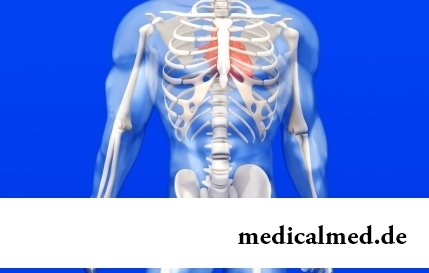





Diklak
Application instruction:
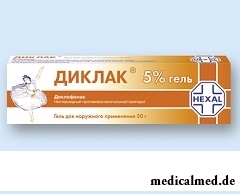 Diklak – non-steroidal anti-inflammatory drug with the febrifugal and anesthetizing action.
Diklak – non-steroidal anti-inflammatory drug with the febrifugal and anesthetizing action.
Form of release and structure
Dosage forms:
- Solution for intramuscular introduction (in oil): colourless or yellowish transparent liquid without foreign particulates (on 3 ml in colourless glass ampoules, in a cardboard box of 5 ampoules);
- Suppositories rectal: a torpedo-shaped form with a smooth surface from white till cream color, have no smell, at a slit – homogeneous structure without impregnations (on 5 pieces in a strip, in a cardboard pack of 2, 6 or 10 strips);
- Tablets of the prolonged action: a round flat form with a smooth surface from two layers of pink and white color, a facet on both sides (on 10 pieces in blisters, in a cardboard pack of 1, 2, 5 or 10 blisters);
- Gel for external use of 5%: colourless or slightly yellow transparent homogeneous consistence with a characteristic smell of isopropyl alcohol, does not contain bubbles (on 50 or 100 g in an aluminum tuba, in a cardboard pack 1 tuba).
Active ingredient – sodium diclofenac:
- 1 ampoule – 75 mg;
- 1 suppository – 50 mg, 100 mg;
- 1 tablet – 75 mg, 150 mg;
- 1 g of gel – 50 mg.
Auxiliary components:
- Solution for introduction in oil: benzyl alcohol, N-Acetylcysteinum, Mannitolum, propylene glycol, sodium hydroxide, water for injections;
- Suppositories: firm fatty basis;
- Tablets: magnesium stearate, methylhydroxypropyl cellulose, lactoses monohydrate, cellulose microcrystallic, starch sodium glycollate, hydrophosphate calcium dihydrate, silicon dioxide colloid, starch corn, ferrous oxide red;
- Gel: makrogol-7-glitserilkokoat, oil fragrant, isopropyl alcohol, the gipromelloza, water purified.
Indications to use
Diklak's use in the form of solution (for short-term therapy of a pain syndrome), suppositories and tablets is shown:
- Musculoskeletal system diseases: psoriasis, juvenile chronic arthritis, the pseudorheumatism ankylosing a spondylarthritis; rheumatic defeat of soft tissues, gouty arthritis, an osteoarthrosis of a backbone and peripheral joints, including with a radicular syndrome, a bursitis, a tendovaginitis;
- Weak or moderate pain syndrome at neuralgia, a mialgiya, a lumbar ishialgia, algodismenory, an adnexitis, a proctitis, migraine, head and a dentagra, at pain after surgery, at the posttraumatic pain syndrome proceeding with an inflammation;
- Feverish syndrome;
- As a part of complex treatment of tonsillitis, pharyngitis, otitis and other infectious and inflammatory diseases of ENT organs with a strong pain syndrome.
Diklak's use in the form of gel for external use is shown:
- Musculoskeletal system diseases, among them pseudorheumatism, the psoriasis arthritis ankylosing a spondylarthritis, an osteoarthrosis of peripheral joints and a backbone;
- Rheumatic defeats of soft tissues;
- Muscular pains of not rheumatic and rheumatic genesis;
- Traumatic damages of soft tissues.
Contraindications
- Aspirinovy bronchial asthma;
- Breastfeeding period;
- Hypersensitivity to drug components;
- Hypersensitivity to acetylsalicylic acid or other non-steroidal anti-inflammatory drugs (NPVS).
Besides, a contraindication to Diklak's use in the form of solution, suppositories and tablets are:
- Aggravation of erosive cankers of the digestive tract (DT);
- Bleedings from a GIT;
- Hemopoiesis disturbances;
- Hemophilia, and other disturbances of a hemostasis;
- Pregnancy period;
- Age up to 15 years – suppositories of 50 mg;
- Age up to 18 years – solution for introduction in oil, suppositories of 100 mg, tablets.
Use of suppositories at hemorrhoids, rectal bleedings, an inflammation or an injury of a rectum is forbidden.
With care patients should appoint drug at a liver and renal failure, anemia, congestive heart failure, at an edematous syndrome, arterial hypertension, bronchial asthma, inflammatory diseases of intestines, GIT erosive cankers during remission, at a diabetes mellitus, a diverticulitis, the induced porphyria, general diseases of connecting fabric, at alcoholism, a state after extensive surgical interventions, at patients of advanced age.
Use of drug in the form of gel is contraindicated at disturbance of integrity of integuments, in the III trimester of pregnancy, to children up to 6 years.
With care it is recommended to apply gel at chronic heart failure, an aggravation of a hepatic porphyria, GIT erosive cankers, heavy abnormal liver functions and kidneys, at bronchial asthma, in I and II trimesters of pregnancy, the patient of advanced age.
Route of administration and dosage
- Solution for introduction in oil: enter deeply in a single dose 75 mg (1 ampoule). In case of need repeated introduction is possible only in 12 hours. Injections in oil spend no more than 2 days. If necessary therapy should be continued by use of diclofenac in the form of suppositories or tablets;
- Suppositories: apply rektalno, after bowel emptying. To adults and teenagers aged from 15 up to 18 years suppositories on 50 mg appoint 1 piece 2-3 times a day. Suppositories on 100 mg are appointed the adult on 1 piece of 1 times a day. A course of treatment – no more than 7 days. The maximum daily dose – 150 mg. In case of simultaneous use with diclofenac in the form of tablets, it is reasonable to apply suppositories on 50-100 mg once before going to bed, having excluded evening administration of drug inside;
- Tablets: apply orally, without chewing, in time or after food, washing down with a small amount of water. Dosing – tablets on 75 mg appoint 1-2 times a day, 150 mg – 1 time a day. The maximum daily dose of drug – 150 mg;
- Gel: apply outwardly, applying on skin of painful body parts and rubbing the easy movements, the procedure is carried out by 2-3 times a day. The single dose of drug should not exceed 2 g that corresponds to 4 cm of the squeezed-out gel from completely open mouth of a tuba. The period of treatment depends on clinical indications and therapeutic effect. In case of need extensions of treatment after 2 weeks of therapy, the patient should consult with the attending physician. After each putting gel it is recommended to wash up hands carefully.
Side effects
Diklak's use in the form of gel, suppositories and tablets can cause side effects (> 1% – often, <1% – нечасто):
- From the alimentary system: often – nausea, abdominal pains, a meteorism, diarrhea or a lock, increase in activity of hepatic transaminases, a round ulcer with possible complications in the form of bleeding, perforation, bleeding in a GIT; infrequently – vomiting, dryness of mucous membranes (including a mouth) aphthous stomatitis, appetite disturbance, jaundice, damage of a gullet, emergence of blood in Calais, the melena, hepatitis (can proceed in a fulminantny form), a liver necrosis, cirrhosis, a gepatorenalny syndrome, colitis, pancreatitis, holetsistopankreatit;
- From cardiovascular system: infrequently – premature ventricular contraction, increase in arterial pressure, thorax pain, congestive heart failure;
- From a nervous system: often – dizziness, a headache; infrequently – a sleep disorder, dreadful dreams, drowsiness, a depression, irritability, aseptic meningitis (is more often at patients with general diseases of connecting fabric, including the system lupus erythematosus (SLE)), spasms, a disorientation, weakness, feeling of fear;
- From an urinary system: often – a liquid delay; infrequently – intersticial nephrite, a nephrotic syndrome, an oliguria, a proteinuria, a hamaturia, an acute renal failure, a papillary necrosis, an azotemia;
- From sense bodys: often – a sonitus; infrequently – taste disturbance, a diplopia, a sight illegibility, decrease in hearing (temporary or irreversible), scotoma;
- From system of a hemopoiesis: infrequently – a leukopenia, anemia (including aplastic and hemolitic), thrombocytopenia, a Werlhof's disease, an eosinophilia, an agranulocytosis;
- Dermatological reactions: often – a skin itch, rash; infrequently – a small tortoiseshell, an alopecia, eczema, punctulate hemorrhages, toxic dermatitis, a Lyell's disease (a toxic epidermal necrolysis), a mnogoformny exudative erythema (including Stephens-Johnson's syndrome) a photosensitization;
- From respiratory system: infrequently – cough, throat hypostasis, a bronchospasm, a pneumonitis;
- Allergic reactions: infrequently – anaphylactoid reactions, hypostasis of lips and language, an acute anaphylaxis (as a rule, develops promptly), an allergic vasculitis;
- Others: infrequently – the development of a necrotizing fasciitis caused by deterioration in infectious processes.
Undesirable effects of use of Diklak in the form of gel can become:
- System reactions: allergic reactions in the form of a small tortoiseshell, a Quincke's disease, bronkhospastichesky reactions; generalized skin rash;
- Local reactions: eczema; contact dermatitis (reddening, an itch, puffiness of a body part in a site of application of gel, a vesicle, a papule, a peeling); photosensitization.
Special instructions
During use of tablets and suppositories it is recommended to carry out systematic control of function of a liver and kidneys, pictures of peripheral blood, a research a calla on availability of blood.
At administration of drug it is necessary to exclude alcohol intake.
During Diklak's use in the form of solution, suppositories, tablets patients need to abstain from those types of activity which performance demands bystry psychomotor reactions and the increased concentration of attention.
Putting gel is allowed only on the unimpaired sites of skin, it is not recommended to use an occlusive bandage. Not to allow hit of gel on open wounds and mucous body surfaces.
Medicinal interaction
Clinically significant interaction with other medicines concerns to Diklak in the form of solution, suppositories and tablets.
Administration of drug increases concentration level in a blood plasma of a methotrexate, digoxin, drugs of cyclosporine and lithium.
Reduces action diuretic, hypoglycemic, hypotensive and hypnagogues.
At Diklak's use against the background of anticoagulants and thrombolytic means emergence of bleedings is possible, is more often from a GIT.
Drug increases probability of development of side effects of other non-steroidal anti-inflammatory drugs and glucocorticosteroids (GKS) (bleeding from a GIT), nephrotoxicity of cyclosporine, toxicity of a methotrexate.
At a combination to acetylsalicylic acid, there is a decrease in concentration of diclofenac in blood.
At a concomitant use of Diklak:
- Kaliysberegayushchy diuretics – increase risk of a hyperpotassemia;
- Paracetamol – increases risk of emergence of nephrotoxic effects of diclofenac;
- Tsefoperazon, цефамандол, цефотетан, пликамицин and valproic acid – increase probability of development of a prothrombinopenia;
- Drugs of gold and cyclosporine – increase nephrotoxicity;
- The drugs blocking canalicular secretion – increase concentration level in a diclofenac blood plasma, increasing its toxicity;
- Ethanol, colchicine, corticotropin and drugs of a St. John's Wort – increase risk of bleedings from a GIT.
Use of all dosage forms of Diklak strengthens action of the means causing a photosensitization.
Terms and storage conditions
To store at a temperature up to 25 °C, solution and suppositories in the place protected from light. To protect from children.
Period of validity: solution for introduction in oil, suppositories on 50 mg, tablets, gel – 3 years; suppositories on 100 mg – 5 years.
Name of drug
Price
Drugstore
Diklak (diclofenac) gel of 5% 50 g, Hexal AG/Salutas Pharma
300 rub.
 Network of the Moscow drugstores of IFC
Network of the Moscow drugstores of IFCDiklak (diclofenac) gel of 5% 100 g, Hexal AG/Salutas Pharma
435 rub.
 Network of the Moscow drugstores of IFC
Network of the Moscow drugstores of IFCAt regular visit of a sunbed the chance to develop a carcinoma cutaneum increases by 60%.
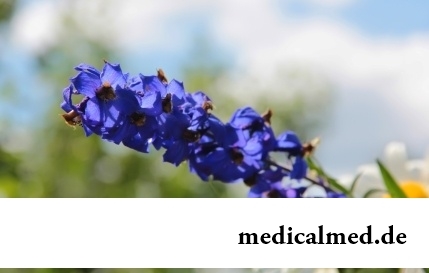
It is impossible to imagine human life in which there would be no plants. Practically in each apartment and any of productions...
Section: Articles about health
Household skills which to us so diligently imparted in the childhood it appears, not always bring only benefit. According to results of the last researches, some habits which for a long time were considered useful and even necessary can become...
Section: Articles about health
The mankind knows that some toxins at intake in the minimum quantities have therapeutic effect from an extreme antiquity. Many substances recognized poisonous are applied in the medical purposes also today, being the main operating components of the medicines which are officially produced by pharmaceutical industry. Let's tell only about the most known of them....
Section: Articles about health
To look healthy and means well-groomed not only to be pleasant to people around, but also to feel strong, sure and taken place. To Spa...
Section: Articles about health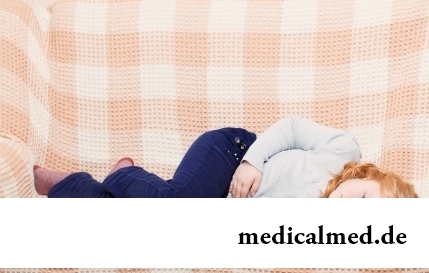
Epilepsy is one of widespread neurologic diseases. Parents, whose children suffer from this illness, should face rumors and delusions, many of which remained since the Middle Ages....
Section: Articles about health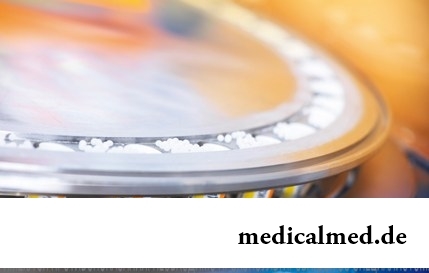
For the help to doctors in the choice of optimal solutions for treatment of various diseases the Cochrane scientific organization (Cochrane) conducts joint researches with representatives of scientific community around the world. The analysis of a series of the conducted researches of the drug Oscillococcinum® relating to group of cold remedies became one of the last methanolyses....
Section: Articles about health
Popular joke that there are no healthy people, and is nedoobsledovanny, most of us considers an honest truth, and put that...
Section: Articles about health
Bulimia and anorexia, are heavy deviations of a feeding behavior, become a cause of death of patients much more often than all other nervous breakdowns combined. In 60% of cases two illnesses accompany each other: patients feel horror before danger on...
Section: Articles about health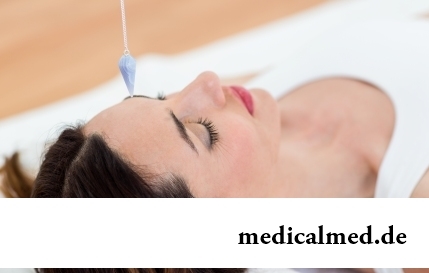
Practice of hypnotic impact on consciousness of the person contains about two millennia. During this time scientists managed to learn a lot of things about a phenomenon of hypnosis and learned to facilitate a condition of the patients having heavy illnesses with its help....
Section: Articles about health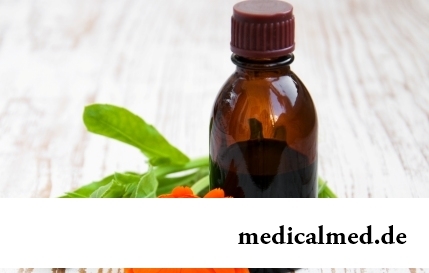
The cosmetics intended for improvement of a condition of skin, nails and hair are used by each woman. Expenses on регуля...
Section: Articles about health
Almost each of us during life faced dissatisfaction with own body. At such moments, as a rule, we begin to shame ourselves, urgently we go on the most rigid diet promising minus of 10 kg in a week, or we exhaust ourselves in the gym to полусм...
Section: Articles about health
Traveling all over the world, many try to try the most exotic dishes of national cuisines. There is even a so-called gastronomic tourism which, according to gourmets, not only allows to receive new feelings, but also is capable to show life of other people from absolutely unexpected side....
Section: Articles about health
Proofs of efficiency of Mildronate at treatment of coronary heart disease with stenocardia can be found in many publications to...
Section: Articles about health
On health of the person physicians know about salutary action of animals long ago. About 7 thousand years ago great Hippocrates recommended to the patients riding walks for strengthening of a nervous system and increase in vitality....
Section: Articles about health
The healthy nutrition is the invariable principle of health and good health for long years of the woman. Nevertheless, in a diet at each stage of life there are the features allowing to support an organism by those substances which are most necessary for it at present. Eating according to them, the woman will be able to feel vigorous and strong, and also to adapt to changes in an organism so that they allowed it to lead active lifestyle at any age....
Section: Articles about health
Each woman has preferences in the field of use of those goods which help us to look good, feel се...
Section: Articles about health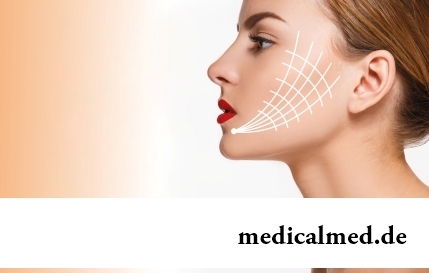
Aging — natural and inevitable process. Over time our skin loses elasticity, on it saggings are formed, the face form loses former clearness. The procedure of nitevy lifting (nitevy tightening) can successfully solve this problem. In order that it is better познако...
Section: Articles about health
Memory is an ability of the central nervous system to fix, keep and as necessary to reproduce information on knowledge or skills received by the person or an animal during life. The mechanism of this process is up to the end not studied....
Section: Articles about health
Obesity is called by a disease of 21 centuries, for the last 100 years by the number of the people suffering from excess body weight, considerably increased...
Section: Articles about health
Feeding by a breast - the integral part of ideal motherhood allowing to come into contact with the kid and to create to it healthy immunity since early years. Nevertheless, this important process in life of mother and child can be saddened laktostazy − by a delay of milts...
Section: Articles about health
White teeth and the Hollywood smile – a dream of many people. Long time was considered that the plaque on teeth and change of their color – destiny of those who incorrectly eat smokes and badly brushes teeth. But the paradox is available: at everything the variety of toothpastes, brushes existing today for toothbrushing and conditioners for a mouth the number of the people hesitating of a plaque on teeth does not decrease. Moreover, the plaque is formed even at small children who definitely do not smoke and have no coffee. So in what business, and опас...
Section: Articles about health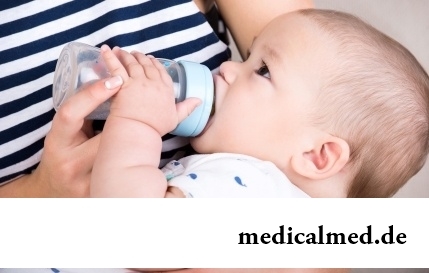
Producers of milk mixes for children assure: mixes are ideally balanced and adapted for needs of babies. In a sluch...
Section: Articles about health
The problem of diagnosis was and remains to one of the most important in medicine. From that, the reason of an indisposition of the patient will be how precisely defined, eventually success of treatment depends. In spite of the fact that the majority of the diagnostic methods applied in about...
Section: Articles about health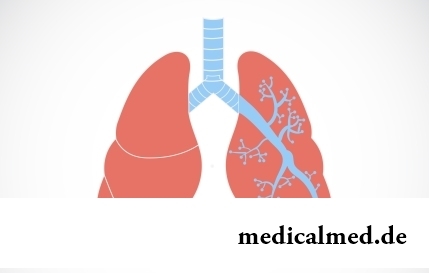
They say that to ensure health and longevity of people it is obliged. Really, at competent approach to these questions, minimization of an adverse effect of many factors does not represent a special problem. Practically everyone has an opportunity to play sports, to pick up an optimum operating mode and rest, to adjust healthy food, to refuse addictions. It is more difficult to exclude hit in an organism of harmful substances through a respiratory organs: not all are able to afford to live in the area with хо...
Section: Articles about health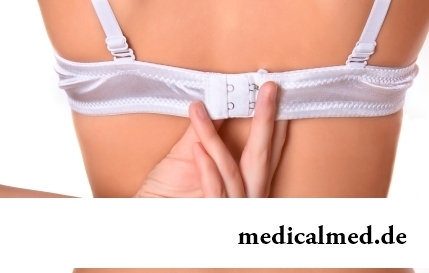
The name of this disease precisely reflects the problem reason: it consists in the bra fastener pressure upon a certain zone...
Section: Articles about health
Statistically, in Russia about 34% of citizens smoke. Most of consumers of tobacco has problems with health sooner or later. Not only smokers, but also their relatives suffer. Besides, cigarettes are expensive, and need of their acquisition heavy bry...
Section: Articles about health
For most of the working people the problem of having a snack is particularly acute enough. Sooner or later there is a question: what can be eaten quickly between a breakfast and a lunch or a lunch and leaving from service so that to receive necessary power feed, but not to overload an organism with harmful components or excess calories? We bring to your attention the list of products which quite conform to these requirements....
Section: Articles about health

